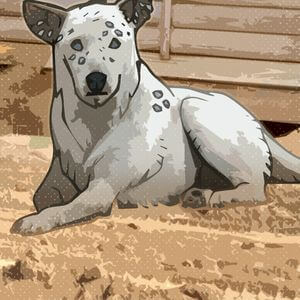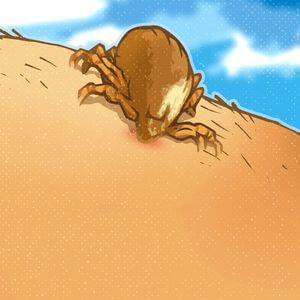Rickettsia conorii

Cell dependent
Rickettsia conorii is a Gram-negative bacillus that multiplies only within cells, much like viruses. We speak in this case of strictly intracellular bacteria. Rickettsia conorii is the agent of Mediterranean spotted fever1 which mainly occurs around the Mediterranean basin. This bacteria is transmitted by the dog tick Rhipicephalus sanguineus2.
Rickettsia conorii can be visualized in cell culture by epifluorescence microscopy using antibodies directed against its surface proteins (sometimes causing it to appear fluorescent yellow). There are many other species that cause spotty fevers and 2 species that cause typhus: Rickettsia prowazekii and Rickettsia typhi3.

Spotty fevers
Spotty fevers are transmitted by ticks and these arthropod vectors determine the geographic distribution of the different forms of spotty fevers. The behavior of tick vectors will also determine the clinical presentation of the disease. Thus, for example, a tick of the genus Dermacentor which prefers to bite its hosts on the scalp will rarely present itself with a black spot4 (visible inoculation lesions following the tick bite) but will rather present itself with a lymph node. appearing at the neck.
Another example is African spotted fever, transmitted by the Amblyomma tick which can smell the CO2 exhaled by mammals, and which will therefore attack in groups. African Rickettsiosis will therefore often present itself simultaneously in several people who have visited the same region (travelers returning from South Africa, for example) and these infected people will then present several black spots linked to multiple tick bites.
Note that spotted fever is an often severe disease associated with significant mortality, as with Mediterranean spotted fever and Rocky Mountain spotted fever.

